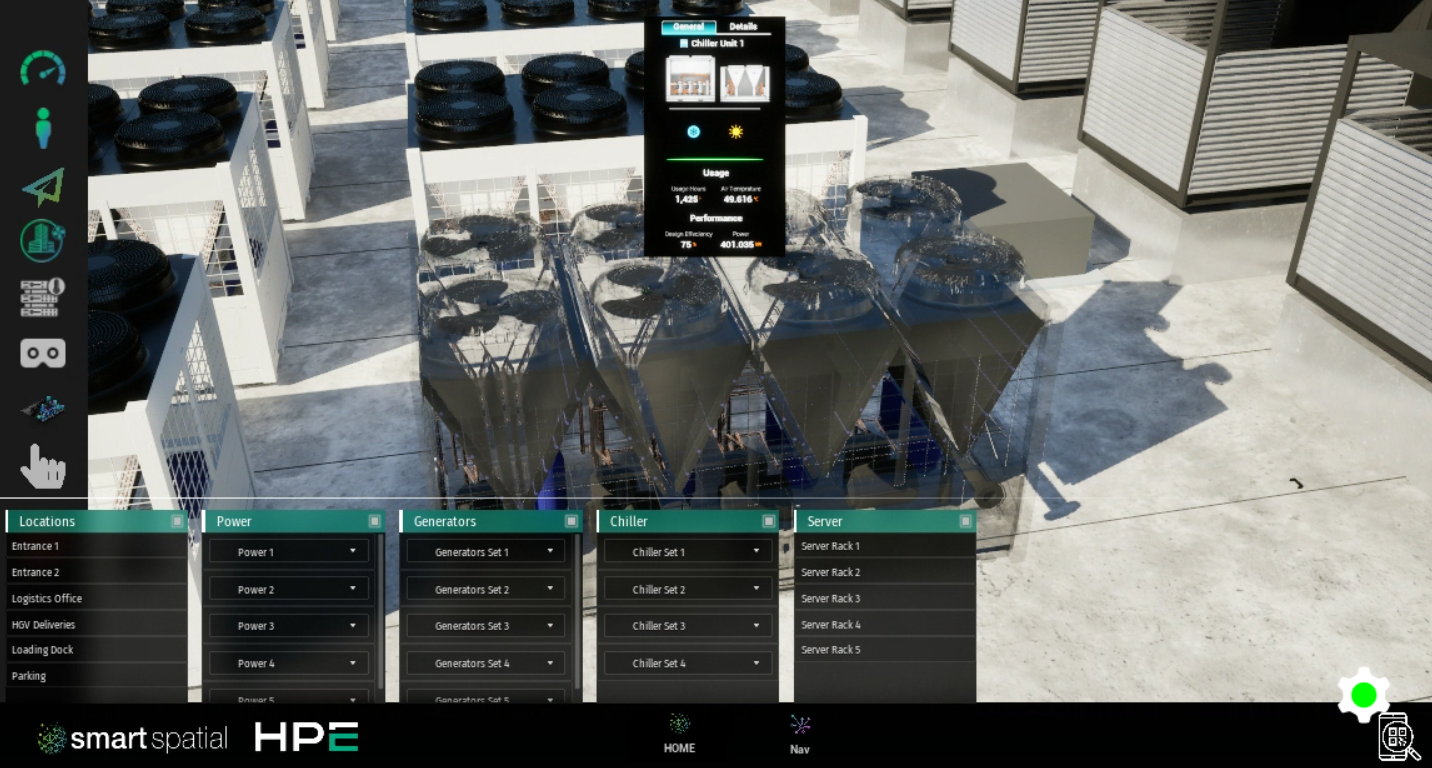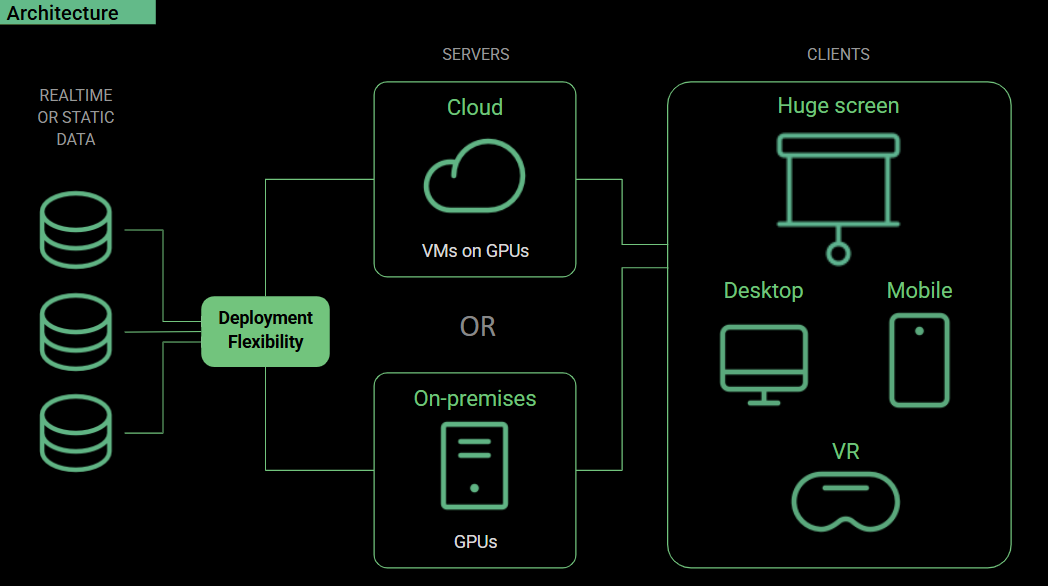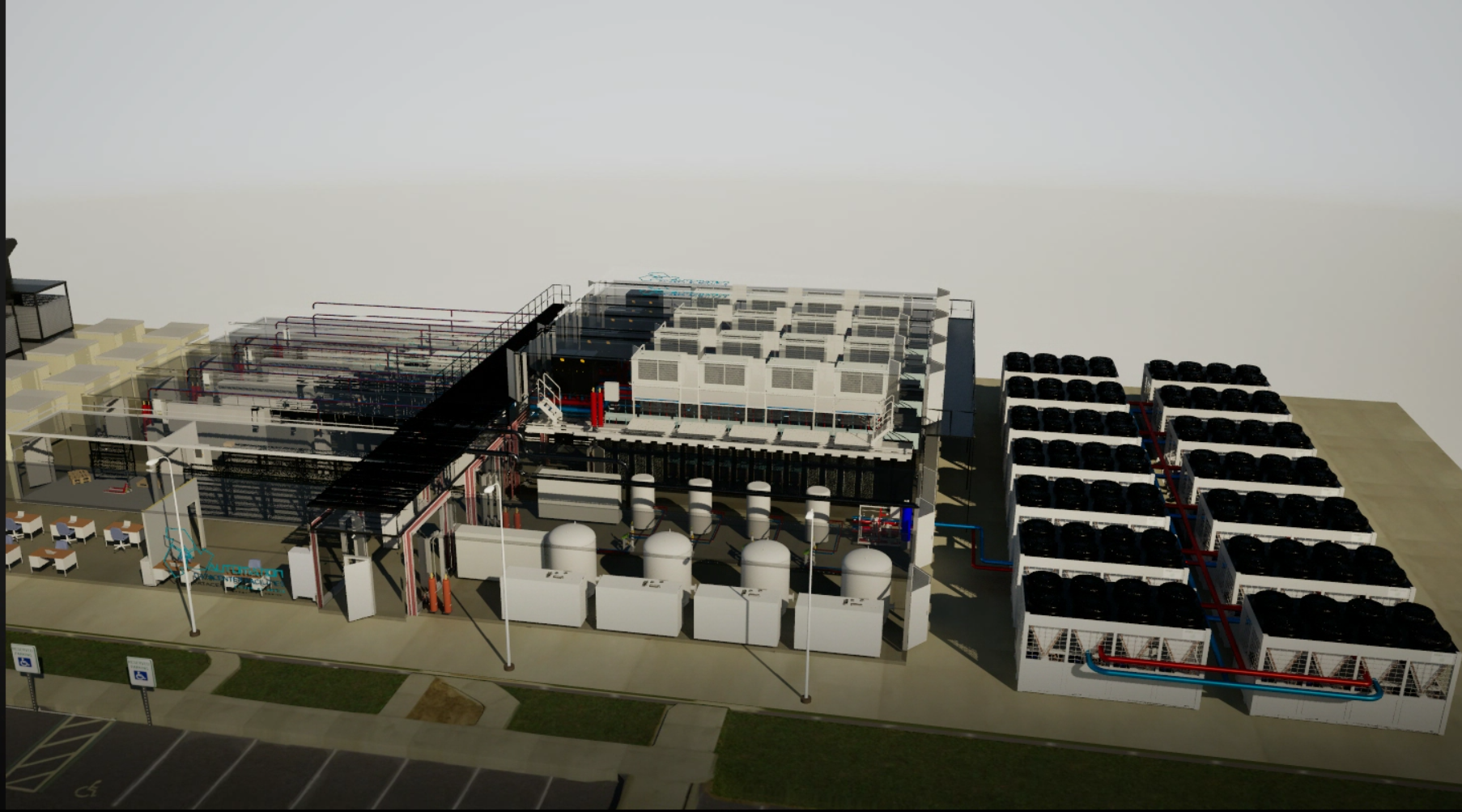In data centers, airports, and hospitals, digital twins provide an example of how they unify telemetry with 3D context to cut downtime, guide response, and prove ROI.
Critical facilities run on tight margins of uptime, safety, and cost. A digital twin—an always-updated virtual representation of assets and systems fed by real-time data—gives operators a shared operational picture to monitor, simulate, and make faster decisions. In this article, we present an example of a digital twin focused on operational asset management across data centers, airports, and hospitals, setting clear expectations for scope, data sources, and outcomes. IBM McKinsey & Company
In operations contexts, twins unify telemetry and spatial context to improve situational awareness and response time. Airports apply them to orchestrate flows and coordinate stakeholders; hospitals use them to streamline facility operations and care pathways; data centers apply them for capacity planning, resilience, and failure simulation. This buyer-focused guide outlines concrete workflows, measurements, and governance patterns that leaders can action today with vendor-agnostic practices. Smart Spacial serves this audience by aligning teams on a single, 3D-aware operational view.
What the twin solves
Security, uptime, and cost suffer when operations rely on dozens of disconnected tools and stale floor plans. A real-time twin unifies telemetry with spatial context so control rooms see the correct signal faster, cut handoffs, and standardize actions.
Example of a digital twin
A single 3D-aware screen shows real-time alarms, root-cause candidates, and safe access routes. Operators can “time-scrub” incidents, replay actions, and attach SOPs to locations—turning tribal knowledge into repeatable response.
Key operational outcomes
- One operational view, fewer screens.
- Faster triage, lower MTTR.
- Fewer blind spots across systems.
- Reusable playbooks from digital twins examples.
- Clear roles, governance, and audit trails.

Airports coordinate stands, gates, and turnaround with live spatial ops; hospitals use facility-aware flows to smooth patient pathways and maintenance; data centers plan capacity and simulate failure safely—each reducing delays and errors.
Data model & sources
A robust twin begins with a canonical asset-event model that unifies equipment, spaces, and live signals. Normalize heterogeneous telemetry, preserve time/space context, and keep lineage so operators can trace every decision. For this digital twin application, adapters map raw feeds into typed entities and events; validation rules guard quality at ingest.

Live systems ingested
- BMS/EMS/DCIM, CMMS, metering, SCADA, CCTV/VMS, and access control.
- IoT sensors, RTLS/BLE tags, network/AP data, weather, and schedules.
- BIM/CAD models and GIS layers for accurate 3D/geo context.
Operations workflows
Operations teams need a tight loop: observe → triage → act → learn. A modern twin places live alarms, status, and procedures on a shared, role-aware screen so control rooms coordinate faster and with fewer handoffs. Research on “digital twin + AI” control rooms highlights dynamic, operator-driven displays and assisted decision support—exactly the patterns used in mission-critical environments.
In practice, airports overlay stand/gate status and baggage flows; hospitals simulate patient pathways and facility loads; data centers monitor capacity, cooling, and failure scenarios—all within a single operational context that shortens detection-to-action time. These are documented in airport operator surveys and case studies, healthcare operational-twin projects, and data-center operations guides.
Core workflows
- Supervision view: one 3D/geo-aware pane unifies systems and alarms. docs.nrel.gov
- Alarm triage & correlation: rank likely root causes; surface impacted assets/areas. SpringerLink ScienceDirect
- Guided response: embed SOPs, access rules, and checklists at locations. Port Technology International
- Time machine & after-action: scrub timelines, replay state, capture lessons. docs.nrel.gov
- Handover & audit: structured shift briefs, event logs, and approvals. Port Technology International
- Remote assist: safe walk-throughs and verification without on-site travel. APL Data Center
Well-run twins consistently reduce MTTR by speeding detection and guided response; recent industry case work shows significant fault-resolution gains when playback, route optimization, and correlated context are used together.
Maintenance & reliability
Unplanned downtime is expensive and avoidable when failure signatures are visible early. A well-implemented twin strengthens reliability engineering by linking condition data, work history, and 3D context, enabling maintainers to predict faults, stage parts, and execute the safest task at the right time. Standards like ISO 55000 frame this as value-focused asset management across the lifecycle, which twins operationalize with continuous feedback loops. i
Technically, analytics infer degradation, estimate remaining useful life, and trigger actions in the maintenance system; field crews then use location-aware SOPs and evidence capture to close the loop. Industry guidance and case literature show predictive programs reducing reactive work by shifting to condition-based interventions, especially when twins correlate telemetry with context.
APM & CMMS loop
- Detect anomaly; estimate risk and impact.
- Create work; pre-stage parts and windows.
- Guide task with spatial SOPs; confirm evidence.
- Learn from outcomes; update thresholds and models.
Training & onboarding
High-risk facilities need repeatable, safe practice before real-world exposure. A training twin delivers lifelike simulations and spatial awareness so new hires and seasoned staff can master procedures without disrupting operations. Programs typically include tiered data-center curricula with interactive assessments and progress tracking, renewal workflows, and HR-system integration for compliance.
Air-tight scenarios cover failure simulation and troubleshooting with branching paths, cascading-fault drills, and AI-driven feedback to close knowledge gaps. For orientation, interactive 3D walkthroughs, role-specific modules, and real-time guidance accelerate familiarity with spaces, systems, and safety protocols—before stepping on site.
Safety & incident response
When seconds matter, an operational twin anchors the incident playbook: it fuses alarms, locations, access rules, and routes into a single view so teams activate ICS roles, move safely, and maintain unified communications. Aligning workflows to recognized frameworks (ICS/NIMS) and life-safety codes (e.g., NFPA 72 for alarms; NFPA 101 for egress and occupant protection) makes procedures auditable and repeatable across shifts.

Incident-ready playbooks
- Spatial alarms: filter by zone, asset criticality, and occupancy. nfpa.org
- Muster & egress: show compliant routes and protected areas in real time. nfpa.org
- Role activation (ICS): assign incident commander, ops, planning, and comms. emilms.fema.gov training.fema.gov
- Unified comms: push checklists and updates; log decisions for after-action. emilms.fema.gov
- Operational resilience: Enforce data-center practices that reduce downtime risk. Uptime Institute
KPIs and ROI
Executives care less about dashboards and more about measurable outcomes. Anchor your program to a small, auditable KPI set that rolls up to reliability, efficiency, and capacity. ISO 55000 frames this as value realization from assets across their lifecycle—twins operationalize that by instrumenting detection-to-action loops and proving impact with before/after baselines.
Board-level KPIs
- MTTR (minutes) and incident rate/severity are trending down. Uptime Institute Uptime Institute
- Unplanned downtime (hours/year) and cost/incident reduced. Uptime Institute
- Energy & cooling efficiency (e.g., PUE, kWh/rack) improved. Uptime Institute
- Time-to-competency and training rework decreased via simulations. smartspatial.com
- Truck rolls/work orders per asset and first-time fix rate improved. smartspatial.com
When calibrated against real baselines, these levers add up. McKinsey notes twins can lift capital and operating performance by 20–30% in infrastructure contexts; factory programs report 5–7% monthly cost savings from schedule and flow optimization—use those as outer bounds and validate locally with your data.
Integration & deployment
Operational twins land best as hybrid systems: edge gateways normalize OT protocols, stream events to a canonical model, and expose role-aware views via secure APIs; latency-sensitive control stays on-prem while heavy analytics and history live in the cloud. Reference architectures from AWS and the Digital Twin Consortium describe this edge-to-cloud pattern and the platform layers (ingest, model, simulate, visualize) it requires.
Security is table stakes: enforce least-privilege roles, private network access, and encryption at rest/in flight; both Azure Digital Twins and AWS IoT TwinMaker document RBAC/IAM controls and private endpoints (Private Link/VPC endpoints) as defaults for enterprise deployments. Complement these with trustworthiness guidance specific to digital twins (threat modeling across model, data, and actuation surfaces) as outlined by NIST and the Digital Twin Consortium.
Interoperability at the edge reduces integration risk and vendor lock-in. OPC UA remains the de facto industrial information layer for secure, semantically rich exchange, increasingly used alongside modern cloud messaging; recent industry moves underscore its role in cross-company data spaces and product passports.
High-fidelity 3D and XR delivery can be centralized and streamed to thin clients rather than shipped to every workstation. Enterprises use GPU-backed streaming (e.g., NVIDIA Omniverse streaming and CloudXR) over LAN or private cloud to provide low-latency, policy-controlled access to interactive operational scenes without distributing sensitive source assets.
Cloud/on-prem choices
Choose cloud, on-prem, or hybrid by latency, data sovereignty, and integration constraints. Cloud patterns (event sourcing, CQRS, bulkhead) help scale twins horizontally, while edge components keep OPC UA/SCADA links close to equipment and backhaul only what’s needed. Academic and vendor guidance converge on microservices and serverless orchestration across the cloud-to-edge continuum; use these patterns to decouple ingest, model, and view services and to meet reliability targets.
Governance & roadmap
Strong programs start with clear ownership and guardrails. Establish a small governance board (operations, IT/OT, safety, legal) and codify roles, decision rights, and change control across the model, data, and workflow layers. Align policies to recognized trustworthiness pillars—safety, security, reliability, resilience, and privacy—so incident handling, access, model updates, and vendor integrations are auditable and repeatable. Use the Digital Twin Consortium’s trustworthiness guidance to frame controls, and NIST IR 8356 to translate them into cybersecurity and assurance practices for digital twins.
Bake governance into the architecture: provenance and lineage on all ingested signals; separation of duties between model authors, operators, and admins; and environment promotion (dev/test/prod) for twin changes. Where manufacturing or facilities are in scope, reference ISO 23247 to standardize terminology, roles, and domain boundaries to ensure that multi-site teams speak the same language.
For the roadmap, move deliberately from pilot to scale using a maturity lens. Set an initial destination (one site, one high-value workflow), lock KPIs and baselines, then expand by domain and site as capabilities harden. DTC’s maturity models and city/industry roadmaps provide stage definitions and diagnostics you can adapt for critical-facility operations. Use them to schedule investments (data quality, automation, training) and to time governance “gates” before each expansion.
Conclusion
Modern twins turn fragmented tools into one operational picture, shortening detection-to-action cycles and hard-wiring learning back into daily work. Start small: pick one site and one high-value workflow, baseline MTTR and downtime, instrument your ingest and model layers, then expand by domain as governance and results harden. For next steps, align teams around a shared supervision view, stand up role-based training scenarios, and track a compact KPI set to prove value as you scale.

